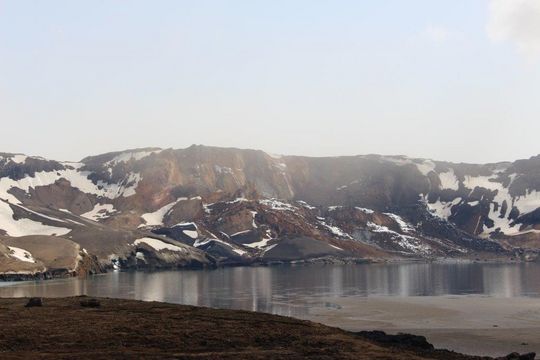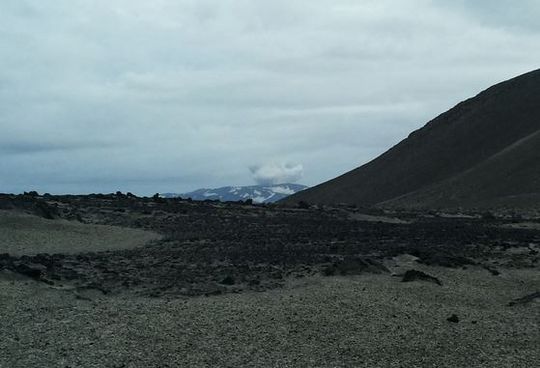Rockslide into Askja caldera
An enormous rockslide fell into lake Öskjuvatn, from the southeastern rim of Askja, at 23:24 on Monday evening 21 July 2014.
Askja is a central volcano and a large caldera situated in a remote part of the central highlands of Iceland. It has a lake in its smaller caldera, which resulted from an 1875 eruption. It is the youngest of such formations on Earth.
As a consequence of the rockslide, a small tsunami traversed the lake and into Víti, a smaller explosion crater on the northeastern shore of Öskjuvatn. Tremors were detected for 20 minutes on seismometers in the area. A witness saw a plume rise from Askja, light in colour, but its origin or composition is not clear.
The weather has been warm. Temperatures have been rather high with more frequent rainfall than usually and a lot of snowmelt has taken place which might have triggered this event, catastrophic in proportions but without any damage or casualty because no tourists nor scientists were present. Parts of the caldera‘s rim might still be unstable and more material might fall into the lake.
The situation was reviewed this morning by scientists from IMO, the University of Iceland and the Civil Protection System of the Icelandic police. Scientists are now on the way to Askja to evaluate the impact of the rockslide and any remaining hazards. Traffic in the area is restricted until further notice. The responsible authority for the Askja region is the police in Húsavík.
A video is available from RÚV, The Icelandic National Broadcasting Service.
Interpretation of the seismic signal associated with this event is given in another article.






